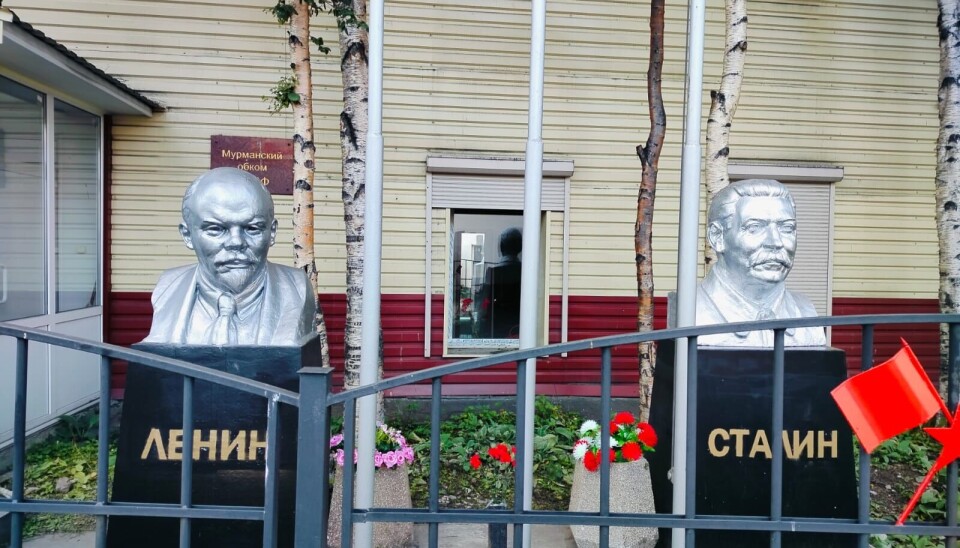
Back to the future: Murmansk unveils Stalin bust
"This is not about memory, but about justifying terror," says Agnessa Haikara, a former member of the Communist Party in Murmansk.
In an attempt to revive the Soviet dictator’s legacy, the Communists Party in Russia’s largest city above the Arctic Circle on August 31 unveiled the shining bust.
Josef Stalin's bust is placed next to the bust of Vladimir Lenin, in front of the office building of the Communist Party on Komsomolskaya Street, downtown Murmansk.
The erection of the bust has previously been met by resistance from Murmansk City officials, among them Yevgeny Nikora, former head of the administration.
“As a citizen I would not want a monument to a very controversial person in Soviet history to be erected in Murmansk," Nikora said when the idea came up for the first time in 2021.
Since then, Stalin statues have been erected across Russia, including at the Taganskaya metro station in Moscow where a replica of the statue that was torn down in 1961 reappeared this spring.
"The authorities have repeatedly torpedoed considerations to install the monument of Josef Stalin," the regional branch of the Communist Party in Murmansk writes in their web-portal.
Now, the members express their gratitude to those who have sponsored and made the bust possible.

During Stalin's terror-regime from 1924 until his death in 1953, a network of Gulag camps was located on the Kola Peninsula, filled with prisoners working to establish mining sites in the region.
During this period, 1,379 people in the Murmansk region were sentenced to death and another 3,055 were sentenced to various terms. 411 were sent into exile and expelled from the country.
Agnessa Haikara is one of those who have studied this period in detail.
She is a former member of the Communist Party and has repeatedly run as a candidate for the Murmansk Regional Duma and the City Council.
Haikara has later reconsidered her views.
"The appearance of Stalin’s bust in Murmansk is a disgraceful attempt to justify the repressions," she told the Barents Observer.
"On the Kola Peninsula, it was the Finns, Norwegians, Sámi, and other small ethnic groups who became victims of Stalin’s terror. To erect a monument to the executioner on the very land where his victims lived and died is not only cynical but also dangerous," Haikara says.
"My great-grandfather led the largest Finnish party cell of the Communist Party on the Murmansk coast. He and many of his comrades believed in a bright future, but the same system destroyed them," Agnessa Haikara tells.
From 1920 to 1944, Finland had territory to the Arctic coast known as the Petsamo corridor. This land was taken by the Soviet Union at the end of World War II.
"I myself believed the Communist Party was a real opposition force." she elaborates.
"Now I understand: the installation of a Stalin bust in Murmansk is not about memory, but about justifying terror. Under the pressure of the Kremlin, historical condemnations are gradually being erased."
"This is cynical towards the victims and their families. It is a mockery of those destroyed by the system and a reminder that Russia still has not come to terms with responsibility for Stalin’s terror," Agnessa Haikara, who today lives in Finland, makes clear.
"We must remember the names of the innocent victims, not glorify the executioner."
She calls for creation of a memorial for the victims of political repression among Finns, Norwegians, and Swedes who lived on the Kola Peninsula.
"For me, this is a way to preserve historical memory and to ensure that respect for the victims and the truth about repression are more important than the cult of a tyrant," Haikara says to the Barents Observer.














